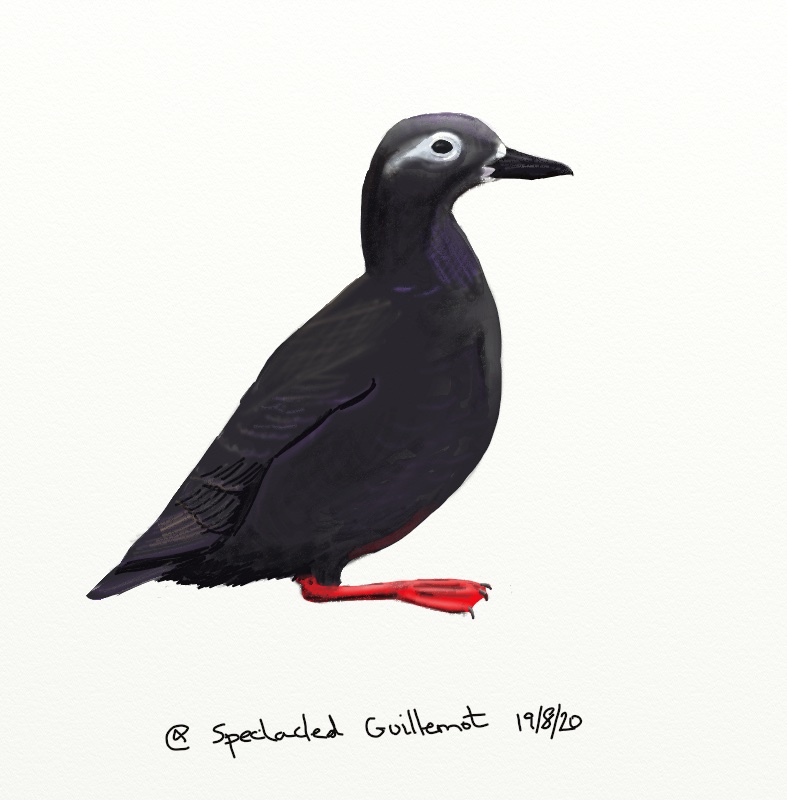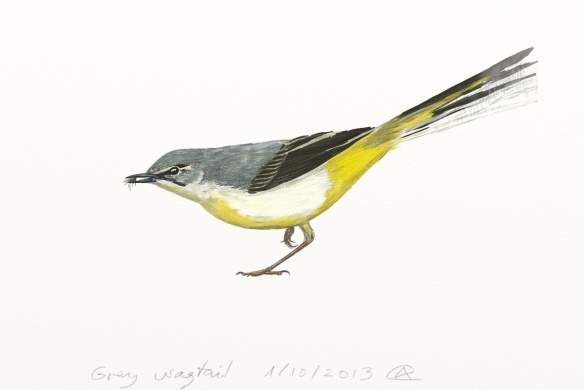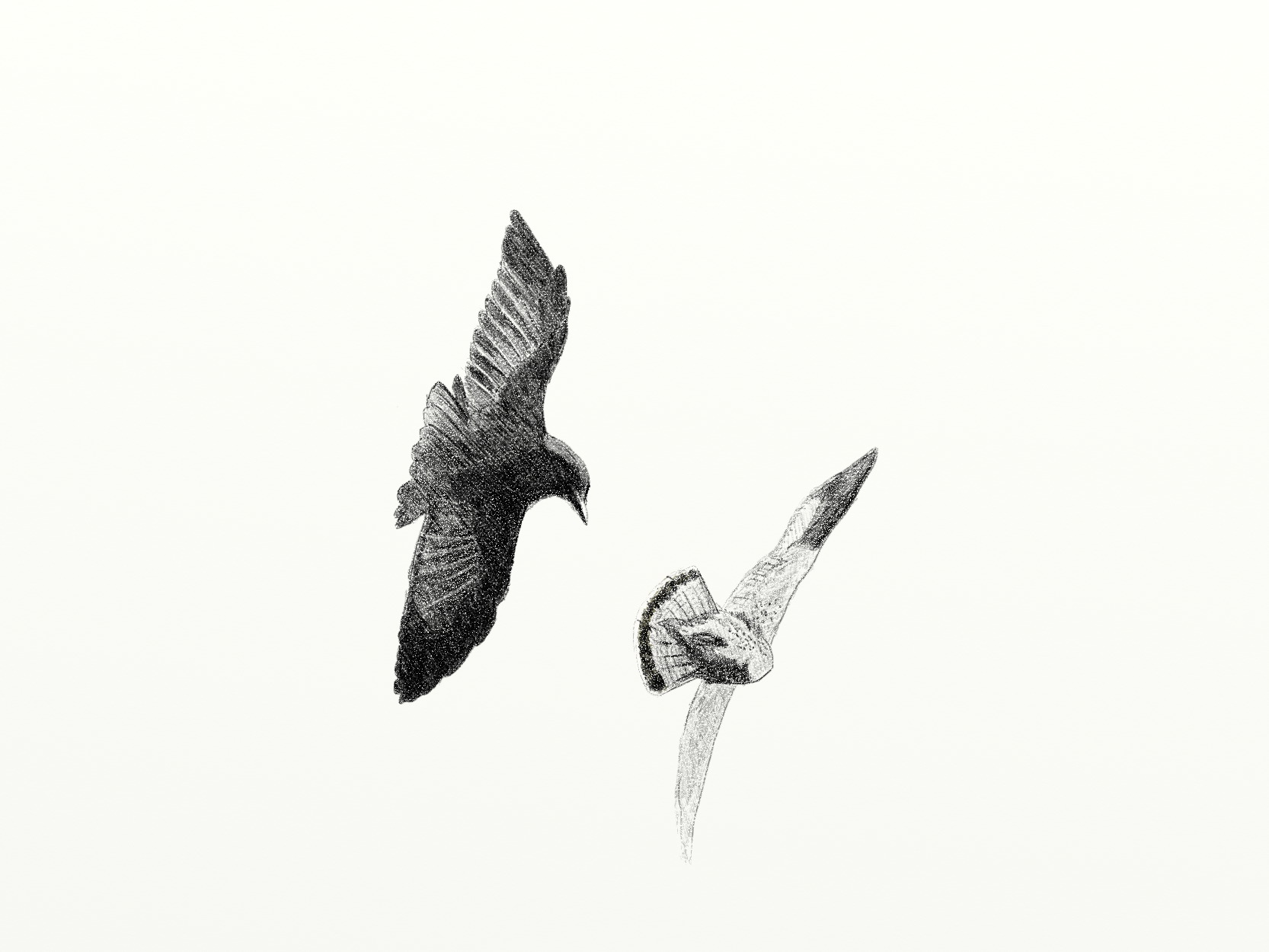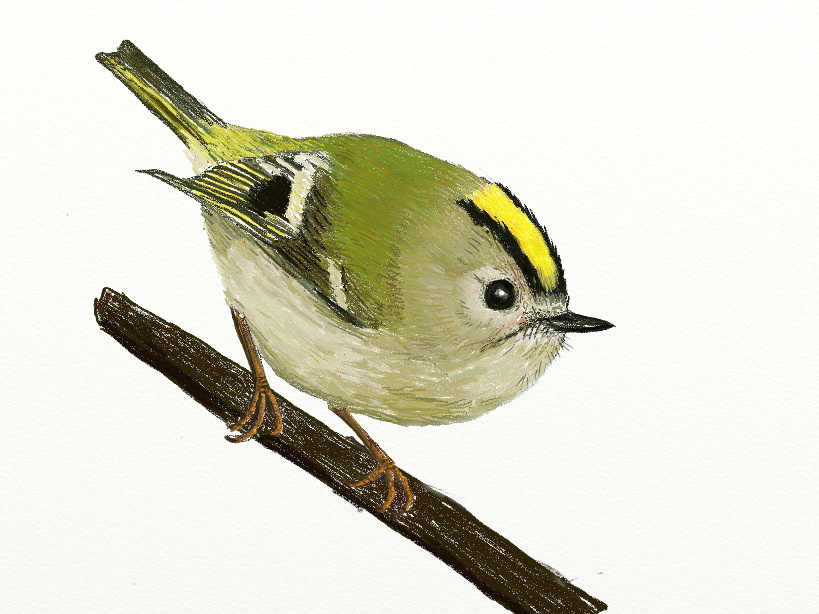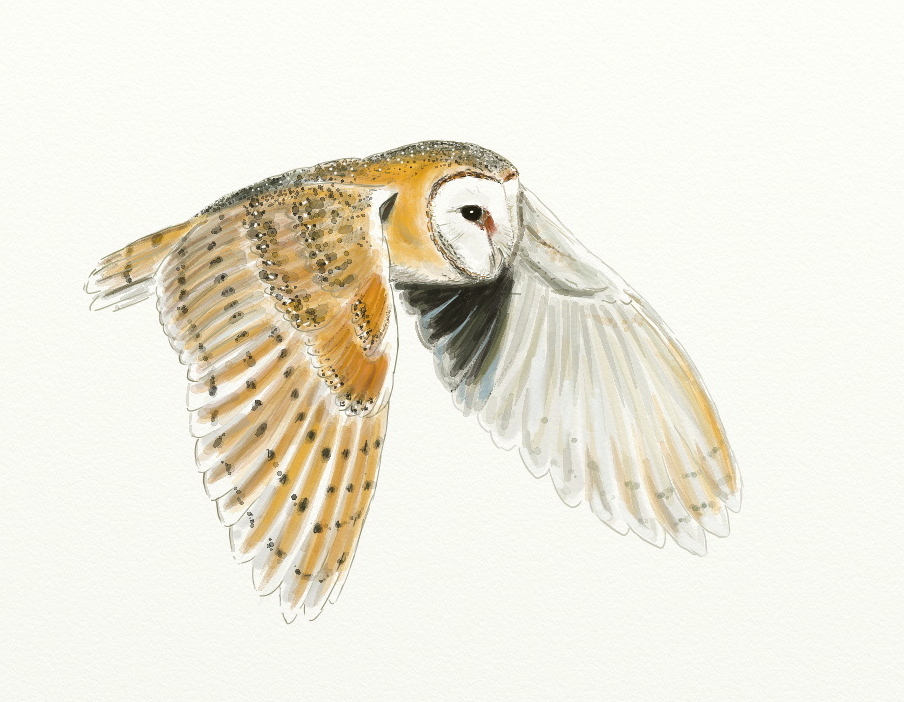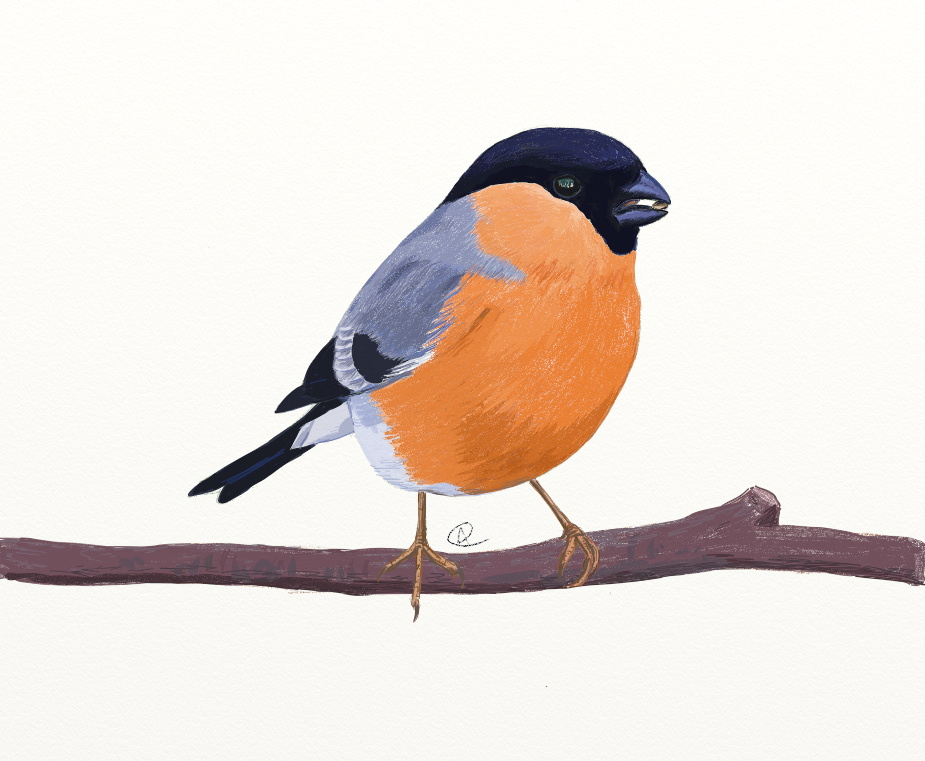
The Ancient Murrelet is another small North Pacific auk, of blackbird size. The white flecks and grey mantle apparently gave it the ‘ancient’ on its name, reminiscent of al elderly person’s shawl. This species undergoes a East-West migration. Individuals breeding on the west coast of north America winter in areas around Japan. It has a peculiar natural history for an auk: males ‘sing’ at night from tree branches to attract partner to nest site, a burrow under a tree or shrub. It usually rears two young, which are precocial and are not fed at the nest by the parents, instead led by parents to water 1-3 days after hatching, at night, and reared there until they are fully grown. I’ve decided to draw murrelets on water, as they spend so little time on land. There is a record of ancient murrelet in the UK, apparently the same individual visited Lundy three years in a row.

